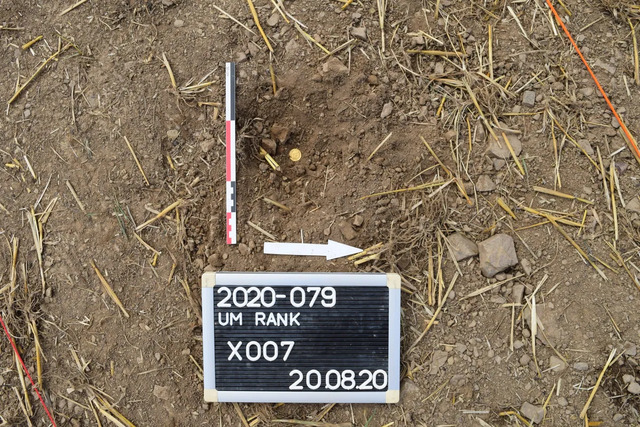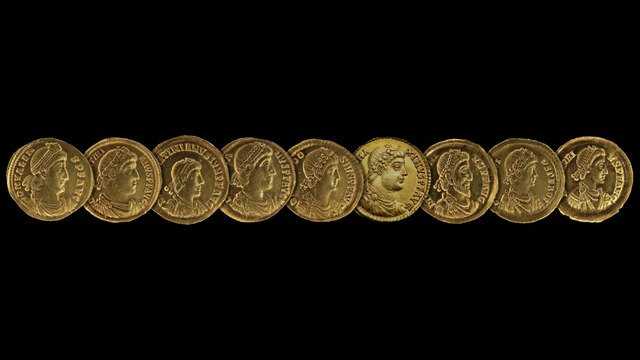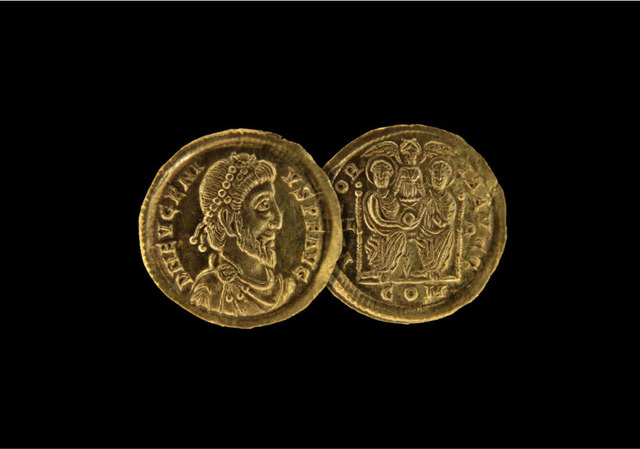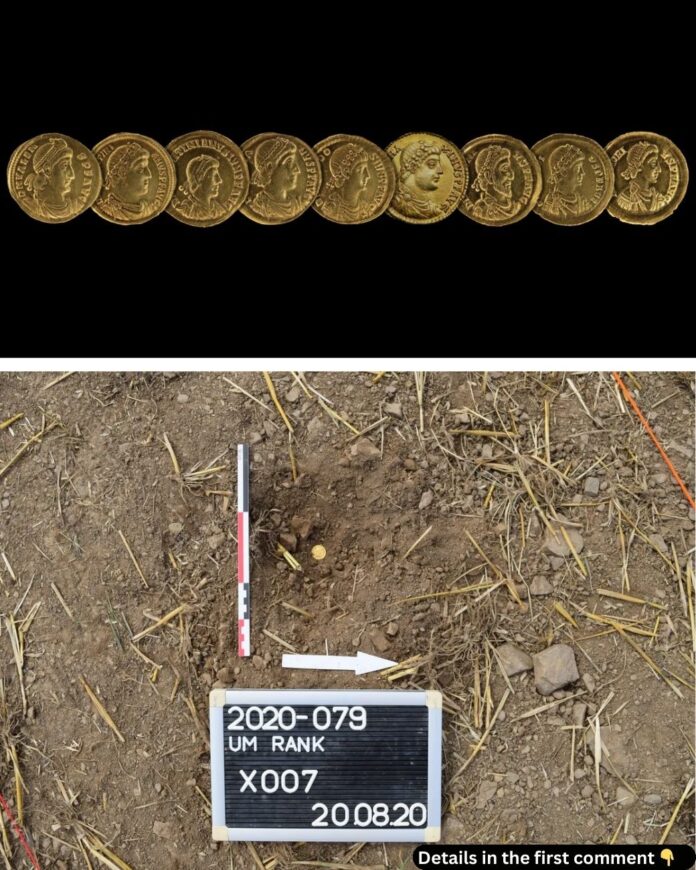Hidden beneath the soil of northern Luxembourg, an extraordinary treasure lay untouched for over 1,700 years: a hoard of Roman gold coins, intricately crafted and steeped in history. This remarkable discovery, featuring the portraits of emperors and a rare usurper, Eugenius, sheds light on a turbulent era of the Western Roman Empire. As archaeologists carefully unearth these glittering artifacts, they piece together a vivid story of power, rebellion, and survival during the empire’s final days.
A Hidden Treasure in Holzthum
The gold hoard was discovered near the small village of Holzthum, in what is believed to have been the foundation of a Roman tower-like fort. The site, excavated between 2020 and 2024 under the auspices of Luxembourg’s National Institute for Archaeological Research (INRA), presented both opportunities and challenges. Layers of World War II munitions complicated the dig, requiring the assistance of the Luxembourg Army Mine Action Service to safely remove potential hazards.

Kept secret for nearly four years due to its significance, this find represents one of the most intact ancient monetary deposits ever studied in its original archaeological context. Such context allows researchers to connect the coins with their historical, social, and political environments, enhancing their value far beyond the precious metals they contain.
Video
Explore the most expensive coins in history – watch the video to discover the rarest and most valuable coins ever sold!
The Solidi: Currency of Stability
The coins in the hoard are solidi, gold coins introduced during the early fourth century under Emperor Constantine the Great. Known for their consistent gold content and reliability, solidi became a cornerstone of the Roman monetary system and were widely used across the Mediterranean for centuries. Each solidus weighs approximately 4.5 grams (0.16 ounces), reflecting the Roman Empire’s meticulous standards for currency production.
Valued at €308,600 (approximately $322,000), the hoard’s pristine condition and the presence of rare specimens highlight its significance. The coins represent not just monetary wealth but a historical narrative of power, conflict, and governance during the empire’s twilight years.
Eugenius: The Usurper’s Legacy
Perhaps the most intriguing aspect of the hoard is the presence of three coins featuring Eugenius, a usurper who briefly ruled the Western Roman Empire from A.D. 392 to 394. Unlike the more established emperors in the collection, Eugenius was an unlikely candidate for the throne. A former rhetoric teacher and court official, he was installed as emperor by the powerful military leader Arbogast following the mysterious death of Valentinian II.

Eugenius’ rule was marked by religious tensions, as he reportedly pursued policies of tolerance between Christians and pagans, a move that angered Theodosius I, the Christian ruler of the Eastern Roman Empire. The conflict culminated in the Battle of Frigidus in September 394, where Eugenius was decisively defeated and executed. His coins are exceedingly rare, reflecting his brief reign and the political instability of the period.

The Historical Context
The coins in the hoard span the reigns of eight Roman emperors, illustrating the complex political landscape of the late fourth and early fifth centuries. This was a time of fragmentation, with internal power struggles and external pressures from migrating tribes, including the Visigoths and Vandals, threatening the empire’s cohesion.
The location of the hoard, near a Roman fort, suggests it may have been hidden during a period of turmoil, possibly as a safeguard against invasion or civil unrest. The inclusion of coins from Eugenius alongside those of more established emperors hints at a fleeting period of acceptance for his rule, even in the farthest reaches of the empire.
Preservation and Cultural Heritage
The discovery of the hoard has not only enriched historical understanding but also underscored the importance of preserving cultural heritage. The INRA team’s meticulous excavation, combined with modern analytical techniques, ensures that the coins will be studied in detail to unlock further insights into Roman monetary practices, trade networks, and political affiliations.
Luxembourg’s Culture Minister Eric Thill emphasized the discovery’s potential to deepen understanding of the Western Roman Empire’s final century. Plans are underway to publish the findings in a research journal, offering scholars and enthusiasts alike a comprehensive view of this extraordinary treasure.
The Solidi’s Broader Significance
The Roman solidus was more than just currency; it was a symbol of imperial stability and authority. Its widespread use across the Mediterranean reflects the interconnected nature of the Roman world, where goods, people, and ideas flowed freely. The coins in the Holzthum hoard serve as tangible links to this dynamic system, offering clues about the economic and political relationships that sustained the empire for centuries.
Moreover, the inclusion of Eugenius’ coins raises questions about how legitimacy was perceived in the Roman world. Despite his defeat and subsequent erasure from official records, Eugenius’ coins suggest a brief moment when his rule was recognized and circulated, even in distant provinces.
Conclusion
The discovery of the 1,700-year-old Roman coin hoard in Luxembourg is a monumental achievement in archaeology. From the pristine solidi of powerful emperors to the rare coins of Eugenius, this treasure trove provides an unparalleled glimpse into a pivotal era of Roman history. As researchers continue to analyze the hoard, it promises to yield valuable insights into the political, economic, and cultural dynamics of the late Roman Empire.
In the village of Holzthum, the echoes of ancient Rome have come to life, reminding us of the empire’s enduring legacy and the stories hidden beneath our feet. This find not only enriches our understanding of the past but also underscores the importance of preserving and studying history for generations to come.
